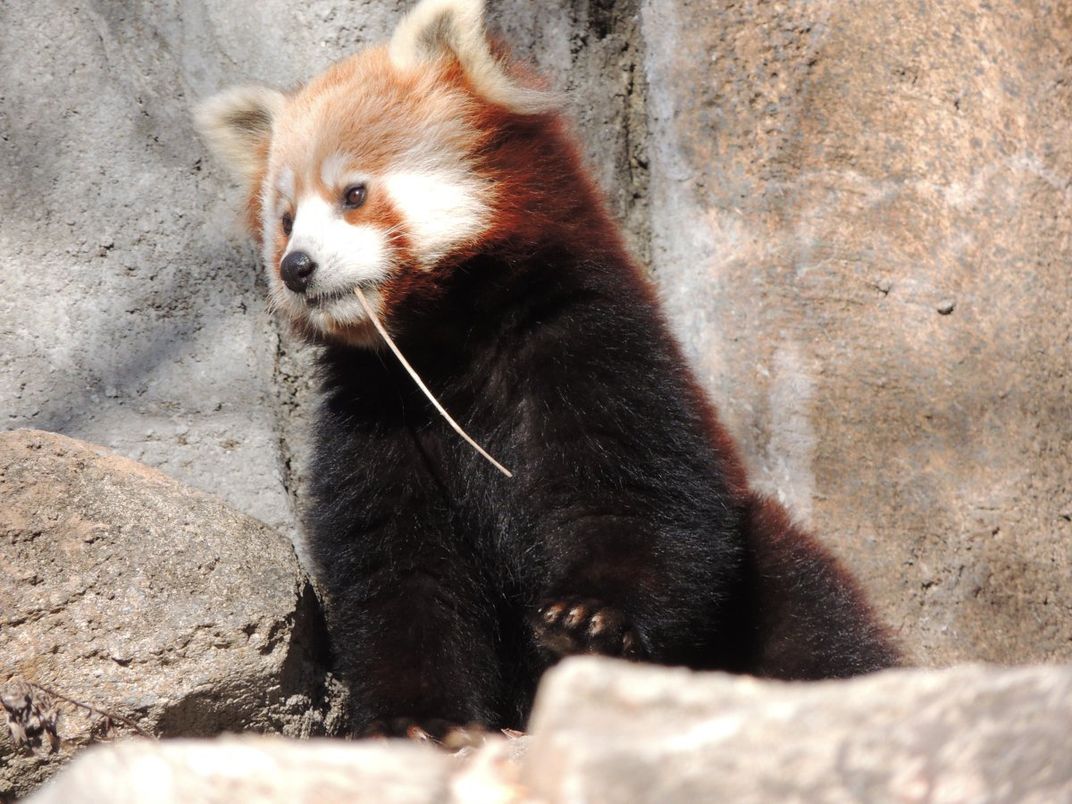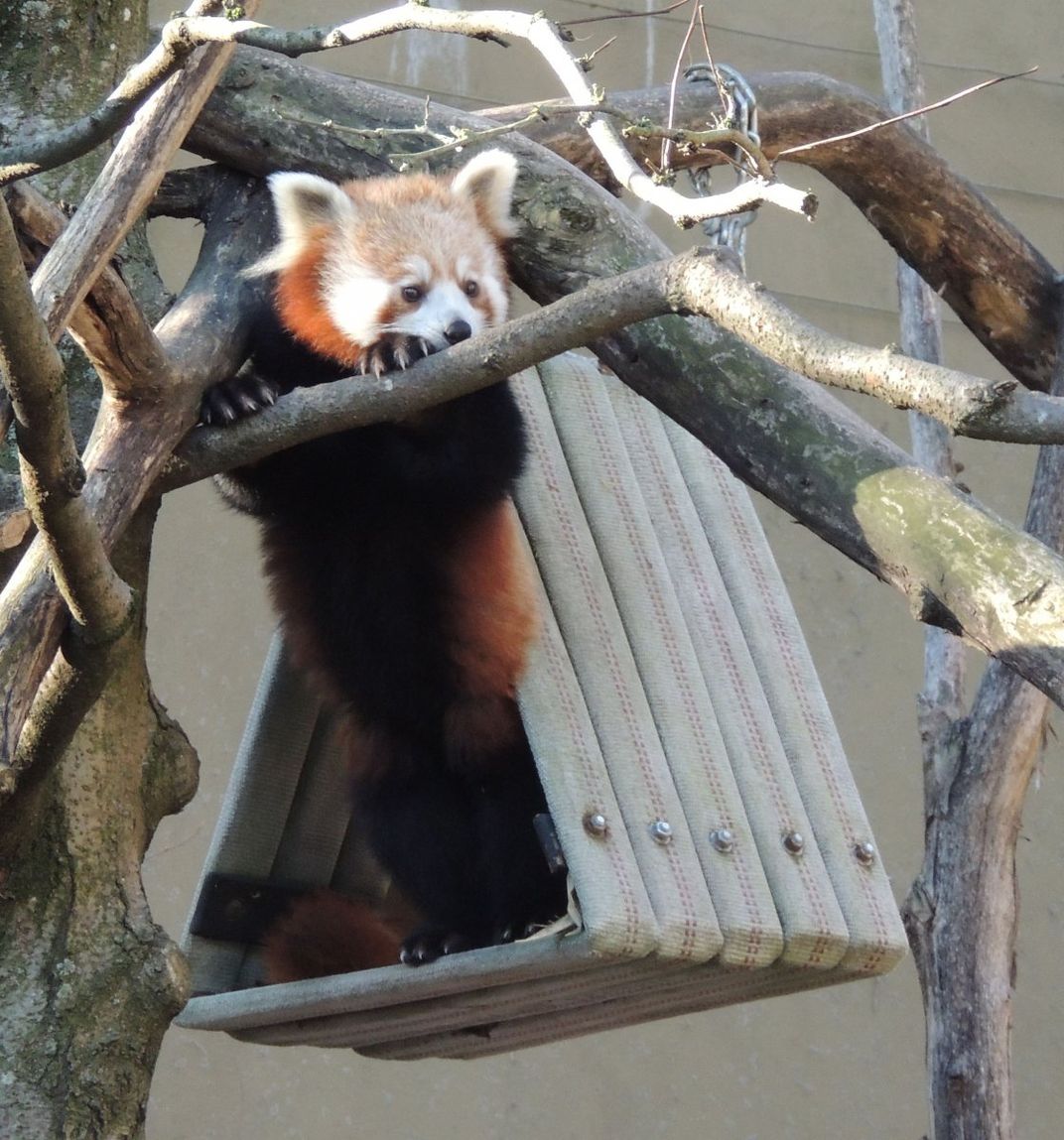SMITHSONIAN SCIENCE EDUCATION CENTER
Fun Facts About Red Pandas
People once thought the red panda was related to bears or raccoons, but they are actually their own genus, Ailuridae. Within the genus, there are two species: fulgens fulgens and fulgens refulgens. Both species live in Eastern Asia, in high-altitude, temperate forest. Learn more about the red panda.
People once thought the red panda, also known as the lesser panda, was related to bears or raccoons, but they are actually their own genus, Ailuridae. Within the genus, there are two species: fulgens fulgens and fulgens refulgens. Both species live in Eastern Asia, in high-altitude, temperate forest.
Red pandas are especially cute*. They grow to be 22-24 inches with a 14-18 inch tail and weigh 8-13 pounds, which is roughly similar to a large house cat. Red pandas have russet and white fur with distinct face markings. Their fur is very thick on their body and tail, which helps keep them warm in the mountainous habitat.

Red pandas use sounds to communicate, but the sounds are generally very quiet. Sounds they use for general communication are squeals, twitters, and huff quacks that are used for general communication. To signal danger, they hiss or grunt. Here's a video that shows some of the sounds that red pandas can make

Like giant pandas, red pandas have the digestive system for a carnivore, but their diet consists mainly of bamboo. Red pandas eat other plants, bugs, and occasionally birds. Their more-diverse diet and their smaller size increase their likelihood of survival, but if there are times of famine, red pandas can decrease their metabolism by sleeping the majority of the day.
Red pandas are arboreal dwellers, meaning they spend most of their time in trees. They have a pseudo-thumb that gives them a better grip on the trees. They can even walk face first down a tree! Each red panda requires up to 1 square mile of forest for food and shelter. As solitary creatures, they do not like to share with others. Generally, only breeding pairs or mothers and babies share space.

The red panda’s natural predator is the snow leopard, but humans have had the largest impact on the species. Deforestation for farms and wood, illegal pet trade, and poaching have decreased the red panda population. There are potentially less than 2,500 individuals left in the wild. This makes the red panda an endangered species.
Because of their endangered status, there are many organizations working to save the red pandas. The Smithsonian’s National Zoological Park and Conservation Biology Institute and the Red Panda Network are two such organizations. Both offer ways to get involved in saving red pandas, which you can check out in the links below.
Two ways you can help these organizations are sharing information with your community and reducing the amount of products you need. People are more willing to support causes they know more about. Consider creating ways to introduce your community to red pandas and the struggle they face. Also, if we decrease the amount of new things we need, we can decrease the amount of resources we use. For example, consider using recycled products or pre-owned items to reduce the need for new products.
Check out red panda support networks!
*No research studies have been done to support this claim.
References:
Smithsonian's National Zoo & Conservation Biology Institute. Red panda. Retrieved from https://nationalzoo.si.edu/animals/red-panda.
